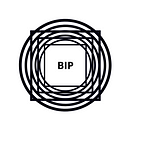Hedera Hashgraph
You may think that is a weird name for a project. But after a quick google search and understanding what the company had built, you will say OK that makes sense.
Hedera Hashgraph “is a public distributed ledger and a governing body built from the ground-up to support new and existing applications running at web scale.” The creators see it as the third generation of public ledgers. The first generation is Bitcoin and the second one is Ethereum. OK, this sounds very interesting. Let’s dive deeper into this.
What exactly is a public ledger? We can picture it as a database that is shared by a few players and everyone updates a synchronized copy of it. If we have a distributed ledger, the whole network of players records and validates each transaction that happens. This is how we take out the middle man. Why would we do that? With moving out the middle man we have greater and easier access to the ledger and it is harder to tamper with the ledger when its copies are distributed across the network.
Similar to Ethereum and blockchain, Hedera Hashgraph lets individuals or enterprises build on top of its technology. As the company says, the application built on top of their technology can be used for numerous situations: “Public distributed ledgers allow for creating and exchanging value, proving identity, verifying and authenticating important data, and much more. “
The company claims that Hedera is faster, fairer, and more energy-efficient than Bitcoin and Ethereum. They also praise it for its stability and security, due to the innovative hashgraph consensus algorithm, developed by their cofounder and the governing body, which owns and operates with Hedera.
The hashgraph consensus algorithm uses different concept to work. In the blockchain, blocks will in the end create a single and the longest chain that the community agrees upon. However, in hashgraph, every container is incorporated into the ledger. You may think this can’t be the faster way than bitcoin, but you are wrong. Bitcoin uses a proof-of-work mechanism to verify transactions, however, hashgraph uses gossip about gossip protocol. Yup, that is the actual name of the protocol. A simple example of how this protocol works was given on their website: “In hashgraph, when sending information between nodes, “Alice” will choose another member at random, such as “Bob”. Then Alice will tell Bob all of the information she knows so far. Alice then repeats this information with a different random member. Bob repeatedly does the same, and all other members do the same. In this way, if a single member becomes aware of new information, it will spread exponentially fast through the community, until every member is aware of it. “
Please visit this link, for a more technical overview of the protocol.
The company had also compared Bitcoin, Ethereum, and Hedera Hashgraph on transactions per second (tps), average fee, and transaction confirmation. They have stated the average Bitcoin and Ethereum fee has been calculated from their average fee between 6/26/2020 and 9/24/2020.
The hashgraph consensus algorithm also uses ABFT, which stands for asynchronous byzantine fault tolerance. This increases the hedera hashgraph security. The Byzantine fault tolerance implies on the hypothetical scenario of the Byzantine general problem. It describes a scenario where multiple generals have to communicate with each other in a city to coordinate an attack. The only way they can communicate is by physically sending messages to each other. How do they know the message they have sent wasn’t tampered with by the enemy and how can they trust the receive they’ve got? That is a real issue.
This approach can be used in the decentralized network: “All centralized networks have independent nodes that act like the byzantine generals in the hypothetical situation above. These nodes must come onto the agreement, or consensus, on things like transactions submitted to the network, the ordering to those transactions, and the state of the network itself. These network nodes are likely separated from each other geographically, virtually, architecturally, and sometimes even ethically. An asynchronous byzantine fault-tolerant network eliminates this assumption and allows for some messages to be lost indefinitely delayed.”
Also, one of the most special features of Hedera hashgraph is governing council. The council consists of up to 39 enterprises and organizations from 11 industries, non-profit, and academia. They own, operate, and oversee the network, therefore, helping it to grow and develop. Council membership lasts for 3 years, with up to two consecutive terms. Former members may re-join after 3 years of pause. Nominees for new members have to receive 1/3rd of the votes. If the members want to be re-elected, they have to receive 2/3rds of the votes. The council also has a Board of managers; created by 7voting members and 1 non-voting person.
We are just getting started with different cryptocurrencies, so there is no certainty of knowing how will all the fuzz around cryptocurrency fold out. But, in something I am certain: building the infrastructure for others to use and build upon can create much more wealth than an ordinary product. By the way, have you googled what hedera means?
